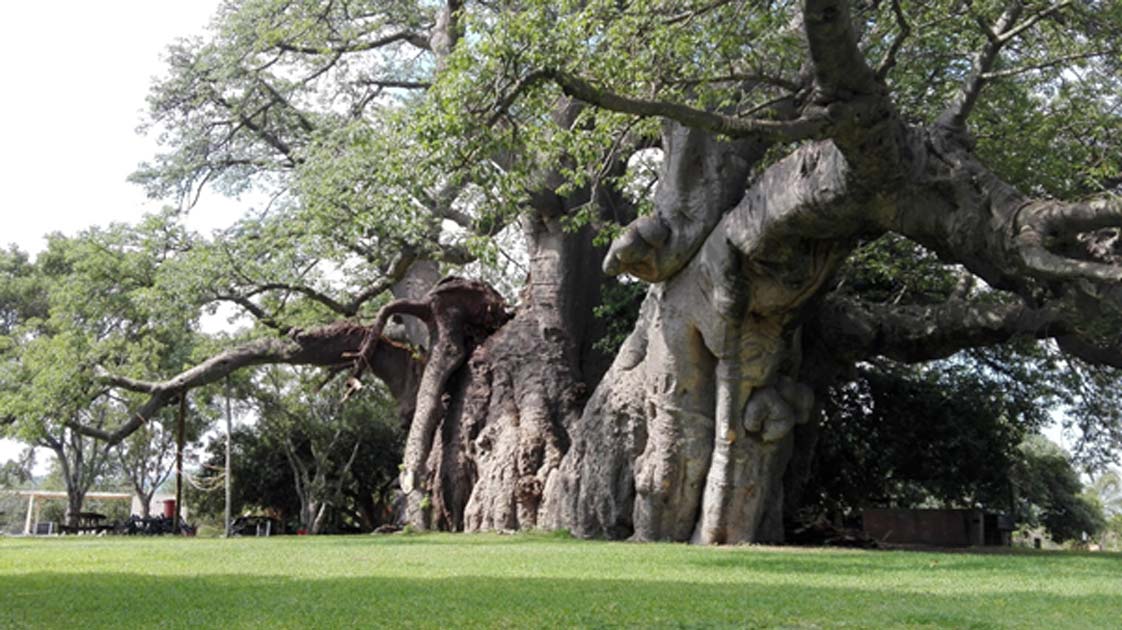The Sequoia tree, found in California, and the Baobab tree, found in Sub-Saharan Africa, are two of the largest and most iconic species of trees on the planet. They have massive trunks that can measure up to 30-feet in diameter and are characterized by their physical and ecological importance. Both species provide shelter, food, and medicine for a range of species, along with being highly valued resources for people. However, both the Sequoia and Baobab trees are threatened by habitat loss, climate change, and overharvesting. It is important to take action to preserve these ancient giants and the ecosystems they support.
Sequoia Tree
The Sequoia tree, also known as the giant redwood, is a species of coniferous tree found primarily in California. It is the largest living organism on Earth, growing up to 380-feet tall and 26-feet wide. The Sequoia tree is characterized by its reddish-brown bark and scale-like leaves that spiral around the branches.
Physical Characteristics
The Sequoia tree is an iconic symbol of strength and longevity. It can live for over 3,000 years, making it one of the oldest species of trees in the world. The trunk of the Sequoia is incredibly thick, measuring up to 30-feet in diameter, and is resistant to fire and insects. The tree’s needles are small and scale-like, and its cones can reach up to 4 inches in length.
Ecological Importance
The Sequoia tree plays a crucial role in the forests of California, providing a habitat for a variety of animals and species. Its lumber is highly valuable and is used for a range of purposes, including construction, furniture-making, and paper production. Despite its importance, the sequoia tree is endangered due to habitat loss and climate change.
Baobab Tree
The Baobab tree, also known as the upside-down tree, is a species of deciduous tree found primarily in Sub-Saharan Africa. It is recognized by its large, bulbous trunk and thick branches that resemble roots. The tree is a vital source of food, medicine, and shelter for people and wildlife in Africa.
Physical Characteristics
The Baobab tree is characterized by its bulbous trunk, which can measure up to 36-feet in diameter, and its gnarled branches that resemble roots. Its leaves are compound and deciduous, falling off during periods of drought. The Baobab’s flowers are white and pendulous, and its fruit is edible and filled with a powdery substance.
Ecological Importance
The Baobab tree plays a critical role in African ecosystems, acting as a keystone species that provides food, shelter, and medicine for a range of animals and people. Its fruit and leaves are highly nutritious, and its bark and roots are used for traditional medicines. The Baobab tree is also a crucial agricultural resource, providing shade and nutrient-rich soil for farmers.
Comparing the Sequoia Tree and the Baobab Tree
The Sequoia and Baobab trees are two of the largest and most iconic species of trees on the planet. While they differ in many ways, they share several similarities in terms of their physical and ecological characteristics.
Physical Characteristics
Both the Sequoia and Baobab trees are characterized by their massive size, with trunks that can measure up to 30-feet in diameter. While the Sequoia is much taller than the Baobab, both species have highly specialized adaptations that allow them to survive in their respective environments. The Sequoia’s thick, fire-resistant bark protects it from wildfires, while the Baobab’s ability to store water in its trunk allows it to survive long periods of drought. Both species also have highly nutritious fruit that serve as an important food source for animals and humans.
Ecological Importance
Both the Sequoia and Baobab trees play crucial roles in their ecosystems, providing shelter, food, and medicine for a range of species. In addition, both trees are highly valued resources for people, with the Sequoia providing valuable lumber for construction and furniture-making and the Baobab providing shade and nutrient-rich soil for agriculture. Despite their ecological and economic importance, both the Sequoia and Baobab trees are threatened by habitat loss, climate change, and overharvesting.
Conclusion
The Sequoia and Baobab trees are two of the most iconic and valuable species of trees in the world. While they differ in many ways, they share several similarities in terms of their physical and ecological characteristics. As we continue to face climate change and the loss of biodiversity, it is critical that we take action to protect these ancient giants and the ecosystems they support. By working together to preserve these vital resources, we can ensure a sustainable future for ourselves and for the countless species that rely on them.
